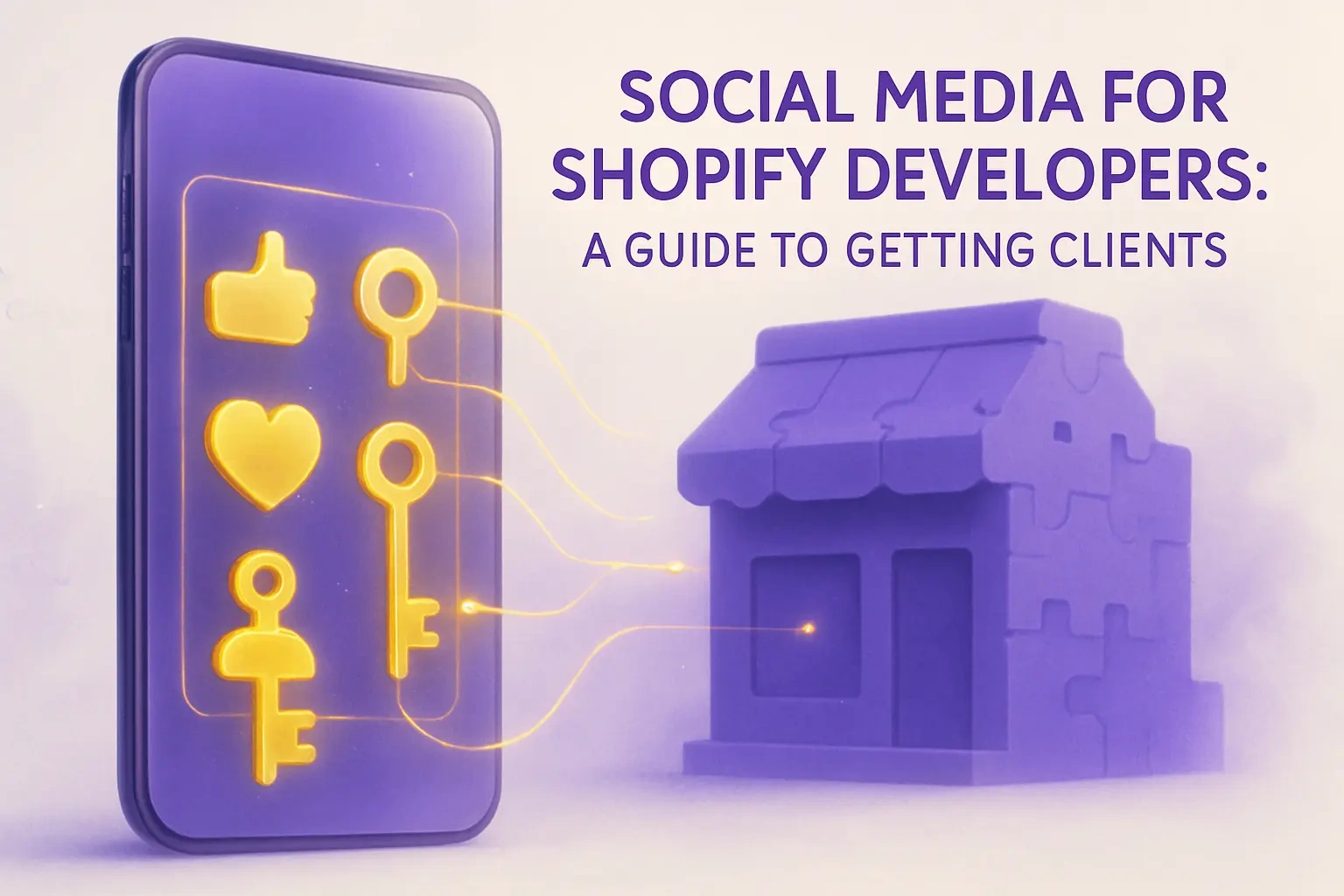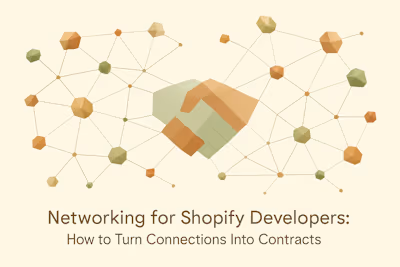Social Media for Shopify Developers: A Guide to Getting Clients

Social Media for Shopify Developers: A Guide to Getting Clients
Choosing the Right Platforms for You
Why LinkedIn is a Goldmine for B2B Clients
Using X (Twitter) to Connect with the Tech Community
Niche Platforms: Are Facebook or Instagram Relevant?
Optimizing Your LinkedIn Profile for Inbound Leads
Crafting a Headline That Speaks to Clients
Writing a Compelling 'About' Section
The Power of Recommendations and Endorsements
Your Content Strategy: What to Post to Attract Clients
Show, Don't Just Tell: Sharing Portfolio Pieces
Provide Value with How-To's and Tip Posts
Engaging with Others' Content to Build Visibility
Proactive Outreach Without Being Spammy
Using LinkedIn Search to Find Ideal Clients
Crafting a Connection Request That Gets Accepted
References
Social Media for Shopify Developers: A Guide to Getting Clients
Choosing the Right Platforms for You
Why LinkedIn is a Goldmine for B2B Clients
Using X (Twitter) to Connect with the Tech Community
Niche Platforms: Are Facebook or Instagram Relevant?
Optimizing Your LinkedIn Profile for Inbound Leads
Crafting a Headline That Speaks to Clients
Writing a Compelling 'About' Section
The Power of Recommendations and Endorsements
Your Content Strategy: What to Post to Attract Clients
Show, Don't Just Tell: Sharing Portfolio Pieces
Provide Value with How-To's and Tip Posts
Engaging with Others' Content to Build Visibility
Proactive Outreach Without Being Spammy
Using LinkedIn Search to Find Ideal Clients
Crafting a Connection Request That Gets Accepted
References
Posted Jul 4, 2025
Go beyond a basic profile. Use LinkedIn, Twitter, and other platforms to attract high-quality Shopify development clients with these proven social media strategies.











